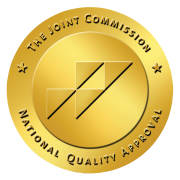What Causes CPTSD?
Understanding the Complex Ties Between Trauma and Healing
Imagine a mind like a tapestry. Each thread represents our experiences, emotions, memories, the very fabric of our being. Now, picture this tapestry enduring a relentless storm, fraying its edges, and sometimes tearing it apart. This storm is trauma, and its aftermath can lead to conditions like PTSD and, in more intricate cases, CPTSD (Complex Post-Traumatic Stress Disorder).
The Basics: Trauma and PTSD
Before diving into the depths of CPTSD, let’s set the stage with its more widely recognized related disorder: PTSD (Post-Traumatic Stress Disorder). PTSD is often associated with a single, life-altering event—a jarring experience that leaves a lasting imprint on the individual. It’s like being stuck on a frightening roller coaster in your mind, long after the ride has ended.
The Chronic Nature of CPTSD
Unlike PTSD, which often stems from a singular event, CPTSD is the cumulative result of enduring trauma over an extended period. It’s like a slow, relentless erosion of one’s sense of self and safety.
Individuals with CPTSD have not just faced a trauma; they’ve lived in it, sometimes for years. This could be due to ongoing abuse, living in a constant state of fear in a conflict zone, or enduring long-term, severe neglect. The trauma becomes a chronic backdrop to their everyday life, shaping their worldview and self-perception.
The Complex Web of CPTSD Symptoms
CPTSD is a multifaceted disorder with a broad spectrum of symptoms, making it a bit of a chameleon in the mental health world. Apart from the classic PTSD symptoms like flashbacks and severe anxiety, CPTSD weaves in layers of emotional complexity.
Individuals might struggle with deep-seated feelings of worthlessness, profound emotional numbness, or an unshakable sense of despair.
They may find themselves in a perpetual state of alertness, as if danger lurks around every corner.
Relationship difficulties are common, as the trust that forms the foundation of connections with others is often shattered. These symptoms make navigating daily life akin to walking through an ever-shifting labyrinth.
The Signs of CPTSD
Key signs of CPTSD include persistent feelings of sadness or hopelessness, emotional numbness, difficulty in maintaining relationships, distrust in others, chronic feelings of guilt or shame, and difficulty controlling emotions. Flashbacks, nightmares, and avoidance of trauma reminders are also common.
The Roots of CPTSD
The Prolonged Exposure to Trauma: The causes of CPTSD are deeply rooted in prolonged exposure to traumatic environments. This can include growing up in a household where emotional, physical, or sexual abuse is the norm, or living through extended periods of war, where violence and loss become everyday realities.
In such environments, the people often feel a pervasive sense of helplessness, a key ingredient in the formation of CPTSD. This feeling of being trapped, with no apparent escape, can profoundly impact one’s mental health.
The Role of Perceived Control (or Lack Thereof)
A critical aspect of CPTSD’s root causes is the person’s perceived lack of control over their situation. When individuals feel powerless to change their circumstances or escape their trauma, they are more likely to develop CPTSD. This sense of helplessness disrupts their ability to cope with stress and can lead to a profound disconnection from their sense of self and reality. It’s not just the traumatic events themselves but the ongoing sense of entrapment and powerlessness that carves the deep emotional scars characteristic of CPTSD.
Can CPTSD go away on its own?
CPTSD is a serious mental health condition that usually requires professional intervention. While symptoms might fluctuate over time, they often don’t resolve entirely without treatment. Therapy, lifestyle changes, and in some cases, medication, are key to managing and improving symptoms.
Can children develop CPTSD?
Yes, children can develop CPTSD, particularly if they experience ongoing trauma such as abuse, neglect, or exposure to domestic violence. Symptoms in children might include emotional dysregulation, developmental delays, difficulties in forming healthy attachments, and behavioral problems. Early intervention and therapy are crucial for helping affected children.
The Road to Recovery: Treatment for CPTSD
While CPTSD is a challenging condition, it’s not an invincible foe. Treatment often includes a combination of psychotherapy, cognitive-behavioral therapy (CBT), and sometimes medication to manage symptoms. It’s like having a skilled guide to help navigate through the maze of the mind.
But perhaps the most crucial aspect of treatment is support – from loved ones, support groups, and healthcare professionals. It’s about rebuilding that tapestry of the mind, thread by thread, with patience and understanding.
Treat CPTSD at Lido Wellness in Newport Beach, CA
Are you or a loved one navigating the complex journey of CPTSD? At Lido Wellness Center in Newport Beach, CA, we understand the intricate patterns of trauma and healing. Our expert team offers personalized care, blending psychotherapy, CBT, and supportive therapies to guide you through this labyrinth.
Don’t walk this path alone; let us help you rebuild your tapestry of life, one thread at a time. Reach out to Lido Wellness today for a compassionate, professional approach to healing.




